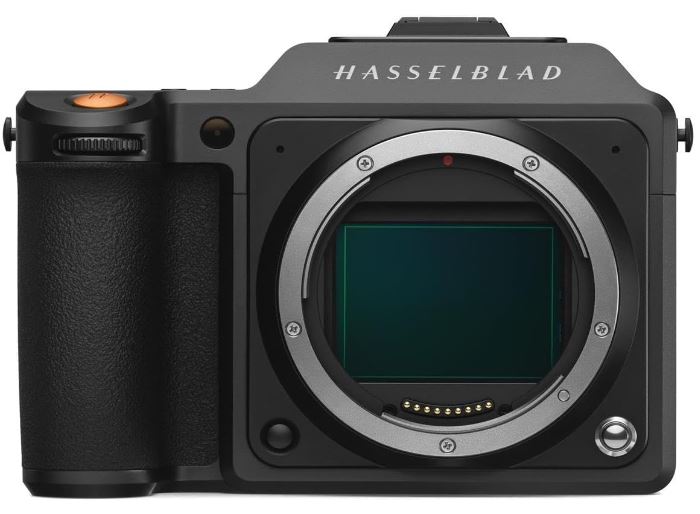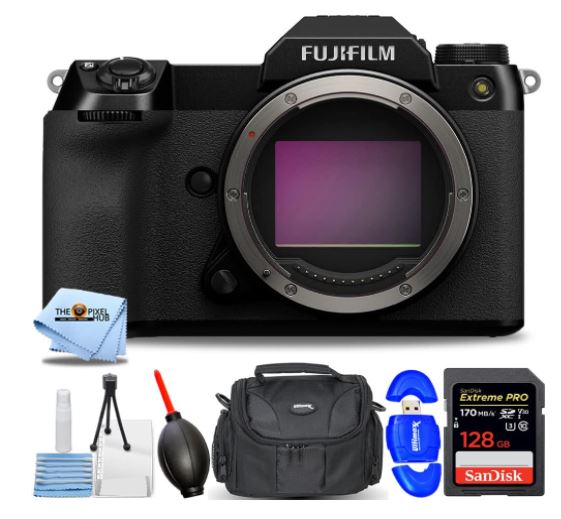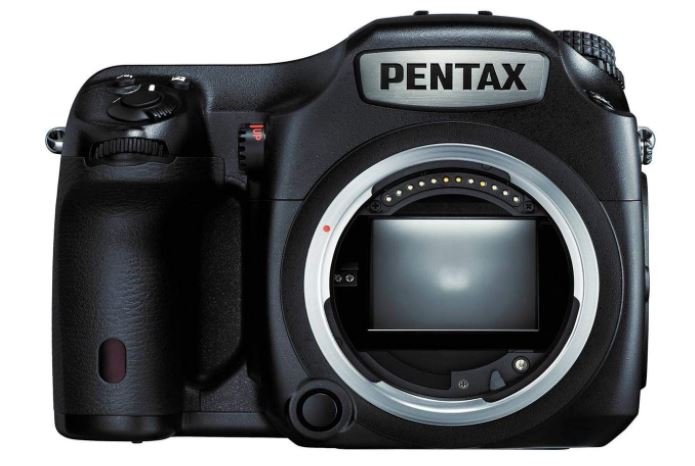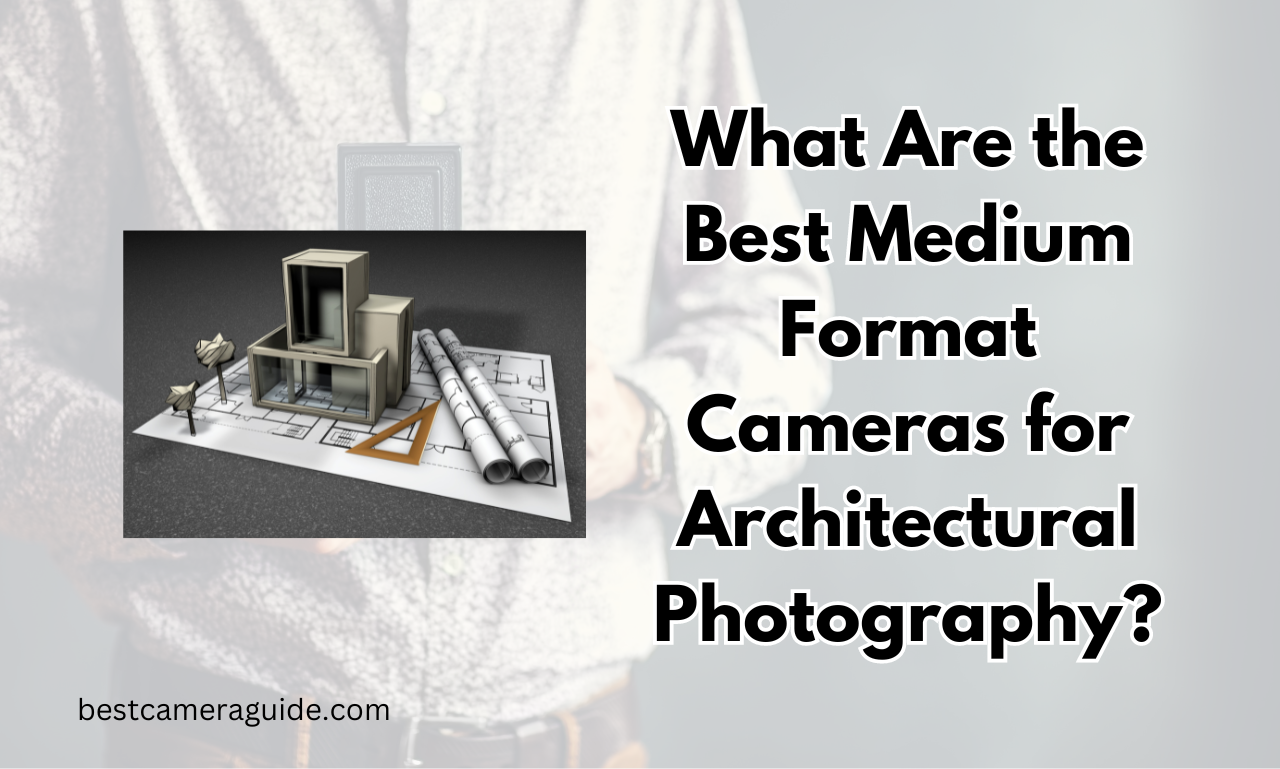Medium format cameras are highly regarded in architectural photography because they offer superior image quality and detail. Unlike smaller cameras, medium format cameras have larger sensors that capture more detail and provide better dynamic range.
As a result, they are ideal for photographing intricate architectural designs and large structures, producing images with exceptional clarity.
Keep Reading: Medium Format Cameras for Editorial Photography
What Makes Medium Format Cameras Ideal for Architectural Photography?
| Image | Product | Price |
|
Our Pick
1

|
Hassel X1D |
|
|
2

|
Fujifilm GFX |
|
|
3

|
Pentax 6457 |

Medium-format cameras excel in architectural photography because of their larger sensors and higher resolution. This combination allows photographers to capture sharp, detailed images of buildings and structures.
The increased sensor size also helps in achieving better color accuracy and dynamic range, which is crucial when dealing with the varied lighting conditions typical in architectural settings.
How Do Medium Format Cameras Compare to Other Types of Cameras for This Purpose?
Compared to full-frame or crop-sensor cameras, medium format cameras offer superior image resolution and color depth. While full-frame cameras are also capable, medium format cameras provide a higher level of detail and less noise in low-light situations, making them more suitable for professional architectural work.
Advantages of Medium Format Cameras in Architectural Photography
Medium format cameras are preferred for architectural photography due to their ability to capture fine details and produce high-resolution images. The larger sensor size allows for a broader dynamic range and better color reproduction, which helps in accurately representing the textures and details of architectural subjects.
What Are the Unique Benefits of Using Medium Format Cameras for Capturing Architecture?
The key benefits of medium format cameras include their exceptional resolution, superior dynamic range, and improved color accuracy. These attributes allow photographers to capture the intricate details of architectural designs and render them with greater precision. Additionally, the large sensor size helps in minimizing distortion and maintaining image sharpness across the frame.
How Does the Sensor Size of Medium Format Cameras Impact Image Quality in Architectural Photography?
The larger sensor size of medium format cameras directly impacts image quality by offering higher resolution and a greater ability to capture fine details. This results in crisper images with more accurate color representation and less noise, particularly in low-light conditions or when making large prints.
Top Medium Format Cameras for Architectural Photography
Several medium format cameras stand out for architectural photography due to their features and performance. Here are three top choices:
Fujifilm GFX 100S
- Which Features Make the Fujifilm GFX 100S Suitable for Architectural Photography?
The Fujifilm GFX 100S is known for its impressive 102-megapixel resolution and in-body image stabilization, which is vital for capturing sharp images of architectural details. Its large sensor provides exceptional detail and dynamic range, making it a top choice for architectural photographers.
Hasselblad X1D II 50C
- How Does the Hasselblad X1D II 50C Perform in Architectural Photography Settings?
The Hasselblad X1D II 50C offers a 50-megapixel sensor and is praised for its compact design and excellent color accuracy. Its electronic viewfinder and touch screen interface make it easy to frame and capture architectural shots with precision.
Phase One XF IQ4
- What Makes the Phase One XF IQ4 a Top Choice for Professional Architectural Photographers?
The Phase One XF IQ4 stands out with its 150-megapixel resolution and modular design. It provides unparalleled image quality and flexibility, making it a preferred option for high-end architectural photography. Its range of lenses and accessories further enhances its suitability for detailed architectural work.
Detailed Review of Each Camera
Fujifilm GFX 100S
- What Are the Key Specifications of the Fujifilm GFX 100S for Architectural Photography?
The Fujifilm GFX 100S features a 102-megapixel sensor, 5-axis in-body image stabilization, and 4K video recording capabilities. It excels in capturing high-resolution images with remarkable detail and clarity. - How Does the Fujifilm GFX 100S Handle Low Light Conditions?
The camera’s large sensor and advanced image stabilization help minimize noise and maintain image quality in low light, making it suitable for architectural photography in various lighting conditions. - What Are the Advantages of Its Resolution and Dynamic Range?
The high resolution allows for detailed images and large prints, while the broad dynamic range ensures accurate color reproduction and detail in both shadows and highlights.
Hasselblad X1D II 50C
- How Does the Hasselblad X1D II 50C Enhance Architectural Photography?
The Hasselblad X1D II 50C offers a 50-megapixel sensor and an intuitive interface. Its compact size makes it easy to handle, and its color accuracy is excellent for capturing true-to-life architectural images. - What Are the Standout Features of the Hasselblad X1D II 50C?
Key features include its high-resolution sensor, large electronic viewfinder, and touch screen controls. These features make it user-friendly and effective for precise architectural photography. - How Does Its Color Accuracy Benefit Architectural Photographers?
The camera’s ability to capture accurate colors helps in representing architectural materials and finishes as they appear in reality, which is crucial for detailed architectural work.
Phase One XF IQ4
- Why Is the Phase One XF IQ4 Considered the Best for High-End Architectural Photography?
The Phase One XF IQ4 is known for its 150-megapixel sensor, which provides exceptional detail and resolution. Its modular design allows photographers to customize their setup for different architectural projects. - What Are the Unique Capabilities of the Phase One XF IQ4?
Unique capabilities include its ultra-high resolution, advanced color accuracy, and wide range of compatible lenses and accessories. These features make it ideal for professional architectural work. - How Do Its Lens Options and Accessories Complement Architectural Photography?
The extensive range of lenses and accessories available for the Phase One XF IQ4 allows photographers to adapt to various shooting conditions and achieve the desired perspective and detail in their architectural shots.
Comparing Medium Format Cameras
- What Are the Differences in Build Quality and Ergonomics Among These Cameras?
The Fujifilm GFX 100S is noted for its robust build and ergonomic design, making it comfortable for extended shooting sessions. The Hasselblad X1D II 50C is more compact and lightweight, enhancing portability. The Phase One XF IQ4, while more modular, is designed for high-end, professional use and offers extensive customization options. - How Does Each Camera Fare in Terms of Image Resolution and Detail?
The Fujifilm GFX 100S offers a resolution of 102 megapixels, the Hasselblad X1D II 50C provides 50 megapixels, and the Phase One XF IQ4 leads with 150 megapixels. Higher resolution translates to more detailed images, with the Phase One XF IQ4 offering the highest level of detail. - Which Camera Offers the Best Value for Money for Architectural Photographers?
The best value depends on budget and needs. The Fujifilm GFX 100S provides excellent resolution and features at a relatively lower price point. The Hasselblad X1D II 50C offers great color accuracy and compactness, while the Phase One XF IQ4, though more expensive, offers the highest resolution and flexibility.
Essential Accessories for Medium Format Cameras in Architectural Photography
What Are the Must-Have Accessories for Medium Format Cameras Used in Architectural Photography?
- Which Lenses Are Best Suited for Architectural Photography with Medium Format Cameras?
Wide-angle lenses are essential for capturing large structures and interiors. Tilt-shift lenses can help correct perspective distortion, which is important for architectural photography. - How Do Tripods and Stabilizers Enhance the Effectiveness of Medium Format Cameras in This Field?
Tripods are crucial for ensuring stability and sharpness, especially in low light or when using slow shutter speeds. Stabilizers can help in achieving smooth shots and reducing camera shake. - What Are the Benefits of Using External Lighting and Filters in Architectural Photography?
External lighting can help in balancing exposure and highlighting architectural details. Filters can enhance color contrast and reduce reflections, improving the overall quality of the images.
Practical Tips for Using Medium Format Cameras in Architectural Photography
How Can Photographers Optimize Their Use of Medium Format Cameras for Architectural Photography?
- What Are the Best Settings for Medium Format Cameras When Photographing Architecture?
Use a low ISO setting to reduce noise, and select a small aperture (high f-stop number) to ensure a deep depth of field, which keeps more of the scene in focus. - How Do You Manage Lighting and Shadows in Architectural Photography with Medium Format Cameras?
Use a combination of natural and artificial light to manage shadows and highlights. Consider using reflectors or diffusers to soften harsh shadows and balance lighting. - What Post-Processing Techniques Are Recommended for Images Taken with Medium Format Cameras?
Post-processing techniques like color correction, sharpening, and perspective correction can enhance architectural images. Use software like Adobe Lightroom or Photoshop to fine-tune your photos and bring out the best details.
Frequently Asked Questions
Are Medium Format Cameras Worth the Investment for Architectural Photography?
Medium format cameras are worth the investment for serious architectural photographers due to their superior image quality and detail. They offer exceptional resolution and dynamic range, which are crucial for capturing intricate architectural elements.
Can Medium Format Cameras Be Used for Other Types of Photography Besides Architecture?
Yes, medium format cameras are versatile and can be used for various types of photography, including landscape, portrait, and studio work. Their high resolution and image quality make them suitable for any
genre that benefits from detailed and large prints.
What Are the Main Differences Between Medium Format and Full-Frame Cameras?
Medium format cameras have larger sensors compared to full-frame cameras, resulting in higher resolution and better dynamic range. This leads to more detailed and accurate images, particularly useful in professional applications.
How Do Medium Format Cameras Handle Large Prints of Architectural Photos?
Medium format cameras excel at producing large prints due to their high resolution. The larger sensor captures more detail, allowing for sharp and clear prints even at larger sizes.
Conclusion
When choosing a medium format camera for architectural photography, consider the resolution, dynamic range, and color accuracy. Medium format cameras offer superior image quality and detail, making them ideal for capturing intricate architectural designs.
Medium format cameras elevate the quality of architectural photography by providing exceptional resolution, color accuracy, and dynamic range. These attributes allow photographers to capture and represent architectural subjects with unparalleled clarity and detail.

